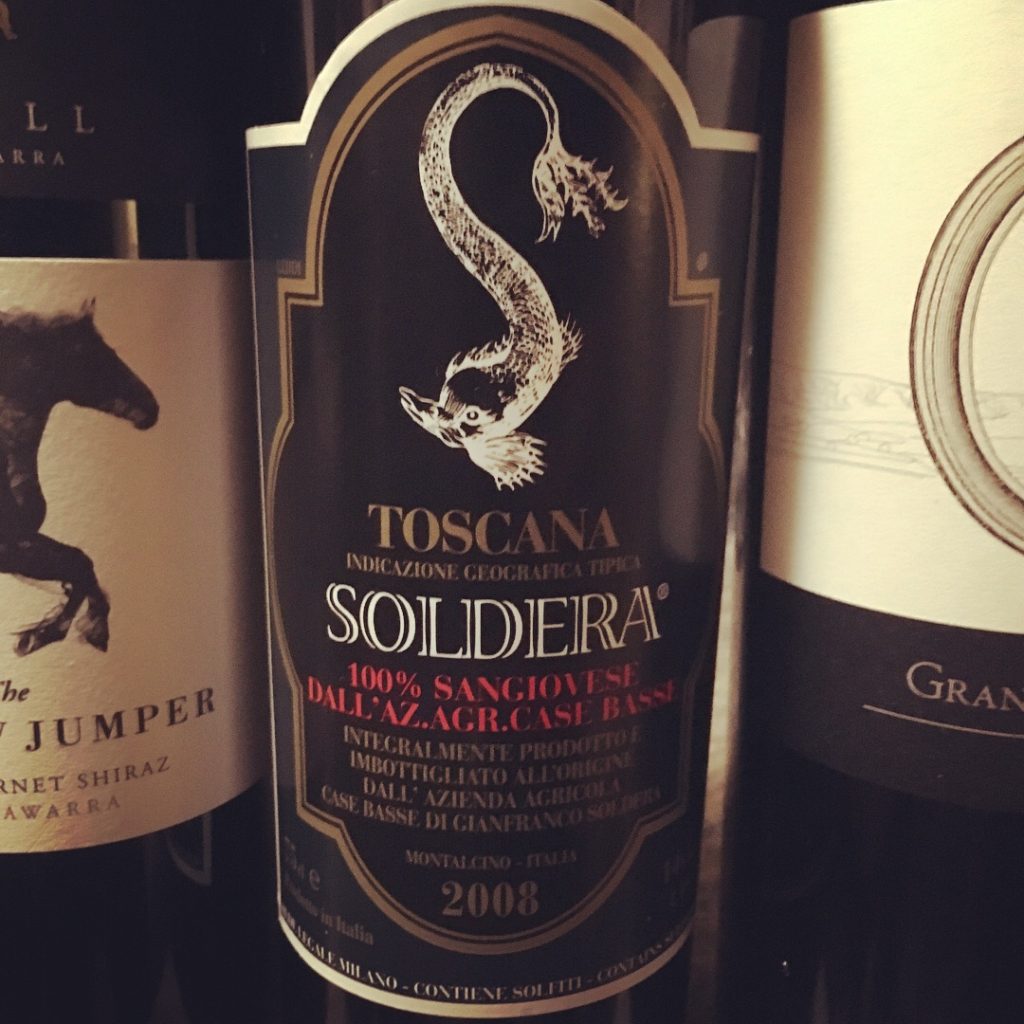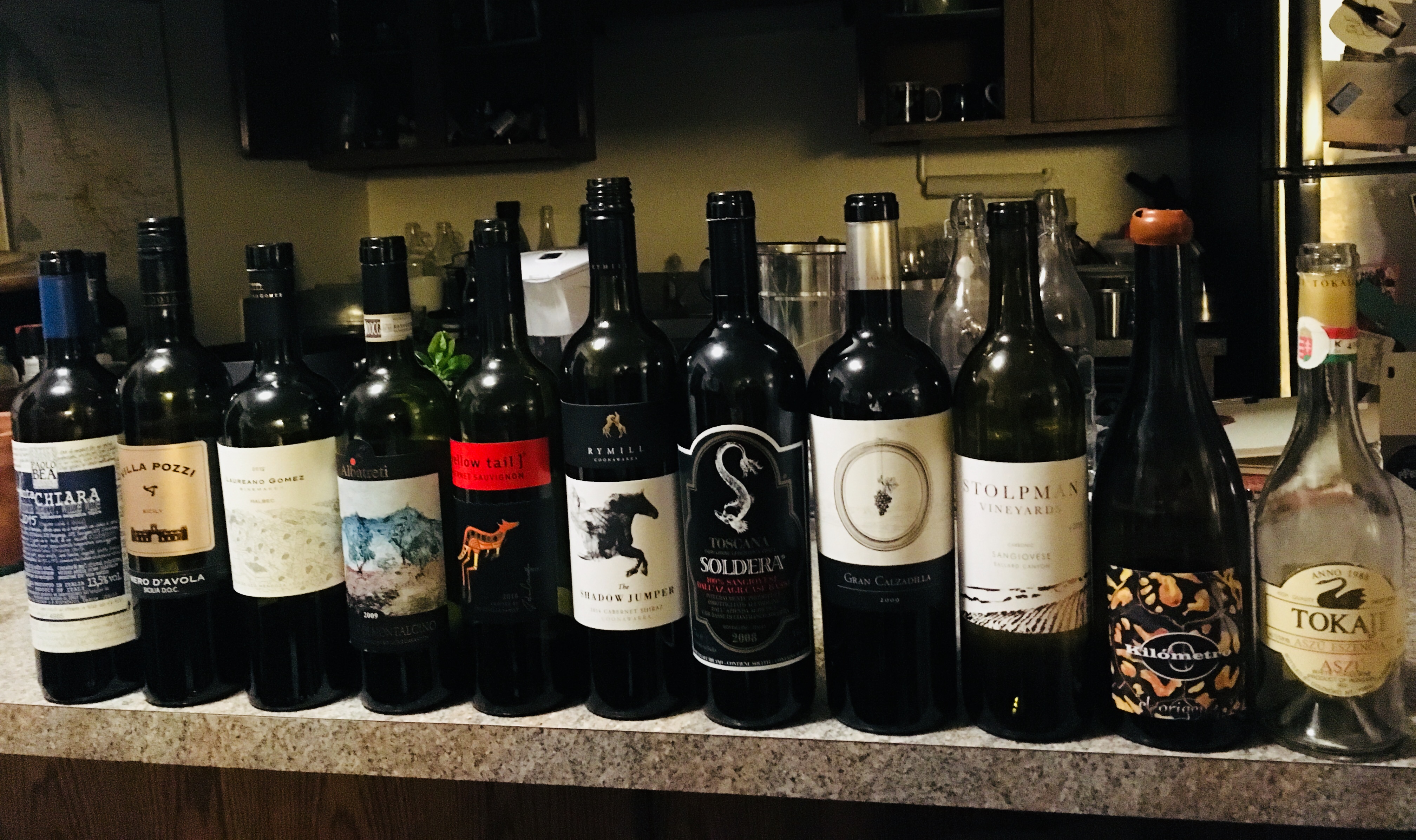May 10 – Soldera Sangiovese / Oak Sequence – Archetype Tasting Group
Wine Tasting, May 10th, 2018
Archetype Tasting Group: Endeavoring to experience the greatest wines in the world.
In this session, we discover Tuscany’s famed Sangiovese producer Case Basse di Gianfranco Soldera, with the 2008 vintage labelled Toscana IGT.

Wines:
- 2015 Paolo Bea, “Santa Chiara” Bianco, White Blend, Umbria IGT, Italy
- 2016 Villa Pozzi, Nero d’Avola, Sicilia DOC, Italy
- 2015 Laureano Gomez, Valle de Uco Malbec, Mendoza, Argentina
- 2009 Albatreti, Brunello di Montalcino, Sangiovese, Tuscany, Italy
- 2016 Casella, Yellow Tail Cabernet Sauvignon, South Eastern Australia
- 2014 Rymill, “The Shadow Jumper” Cabernet Shiraz, Coonawarra, South Australia
- 2008 Soldera, Sangiovese, Toscana IGT, Italy
- 2009 Bodega Familiar Uribes Madero, “Gran Calzadilla” Vino de Pago, Red Blend, Castilla-La Mancha, Spain
- 2014 Stolpman Vineyards, “Carbonic” Sangiovese, Ballard Canyon, California, US
- 2015 MicroBio, Verdejo Kilómetro, Castilla y Léon, ES
Attendance:
- Stefanie C.
- Margaret C.
- Ian D.
- Nick D.
- Emily E.
- Xin F.
- Lili K.
- Matt L.
- James L.
- Jon M.
- Terry M.
- Munya S.
- Jane W.
- Jason S.
—
Founded in 1927, Soldera stunning name in Italian wine, linked to legends and scandals alike. Producing arguably the most ethereal expressions of Sangiovese in the world, the estate saw destruction of six vintages in 2012, when a former employee opened the taps on tanks of maturing wine.
Thankfully, small amounts of the 2007 through 2012 vintages were salvaged, which we have the lucky opportunity to taste. Formerly labelled as Brunello di Montalcino Riserva, Gianfranco Soldera chose to withdraw from the Consorzio in 2013, following the “Brunellogate” scandal, in which he blew the whistle on producers who were using non-Sangiovese grapes in the production of DOCG wines.
To quote Antonio Galloni via Vinous: “Soldera’s approach in the vineyard can only be described as maniacal. No detail is overlooked. Things seem a little more relaxed in the cellar, where natural fermentations and extended macerations are the rule. The wines spend six years or more in large, neutral oak casks with minimal rackings, but even with extended time in barrel these wines always show notable brightness, freshness and a level of purity in the fruit that is truly remarkable.”

